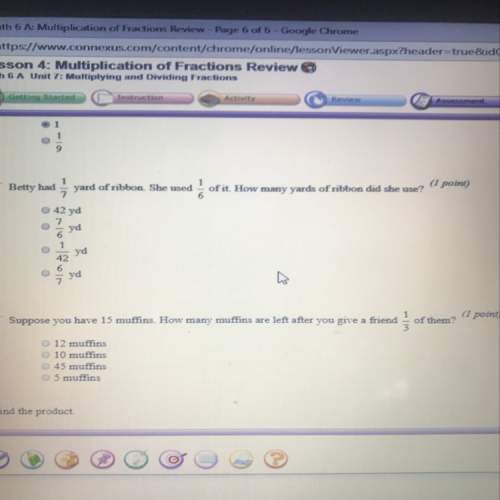
Mathematics, 08.03.2021 18:10 pinapunapula
Nate measured the side length and perimeter or five equilateral triangles, as shown in the table below. Which of the following best explains why these vales are or are not in a proportional relationship?
A They are proportional, because the ratio of perimeter to side lengths is always 3:1. B They are proportional, because the perimeter always increases by the same amount from column to column.
C They are not proportional, because the side length increases by varying amounts from column to column.
D They are not proportional, because the difference between side length and perimeter is different for each column.

Answers: 3
Another question on Mathematics

Mathematics, 21.06.2019 17:10
Consider the functions below. function 1 function 2 function 3 select the statement which is true about the functions over the interval [1, 2] a b function 3 has the highest average rate of change function 2 and function 3 have the same average rate of change. function and function 3 have the same average rate of change function 2 has the lowest average rate of change d.
Answers: 3

Mathematics, 21.06.2019 18:10
The means and mean absolute deviations of the individual times of members on two 4x400-meter relay track teams are shown in the table below. means and mean absolute deviations of individual times of members of 4x400-meter relay track teams team a team b mean 59.32 s 59.1 s mean absolute deviation 1.5 s 245 what percent of team b's mean absolute deviation is the difference in the means? 9% 15% 25% 65%
Answers: 2

Mathematics, 21.06.2019 18:40
Juliana says that she can use the patterns of equivalent ratios in the multiplication table below to write an infinite number of ratios that are equivalent to 6: 10. which statement explains whether juliana is correct? she is correct because she can multiply 6 and 10 by any number to form an equivalent ratio. she is correct because 6: 10 can be written as 1: 2 and there are an infinite number of ratios for 1: 2. she is not correct because the multiplication table does not include multiples of 10. she is not correct because 6: 10 is equivalent to 3: 5 and there are only 9 ratios in the multiplication table that are equivalent to 3: 5.
Answers: 1

Mathematics, 21.06.2019 19:30
Weekly wages at a certain factory are normally distributed with a mean of $400 and a standard deviation of $50. find the probability that a worker selected at random makes between $450 and $500
Answers: 2
You know the right answer?
Nate measured the side length and perimeter or five equilateral triangles, as shown in the table bel...
Questions









English, 02.02.2021 18:50

Mathematics, 02.02.2021 18:50



Medicine, 02.02.2021 18:50

Mathematics, 02.02.2021 18:50

Physics, 02.02.2021 18:50


English, 02.02.2021 18:50



Spanish, 02.02.2021 18:50




